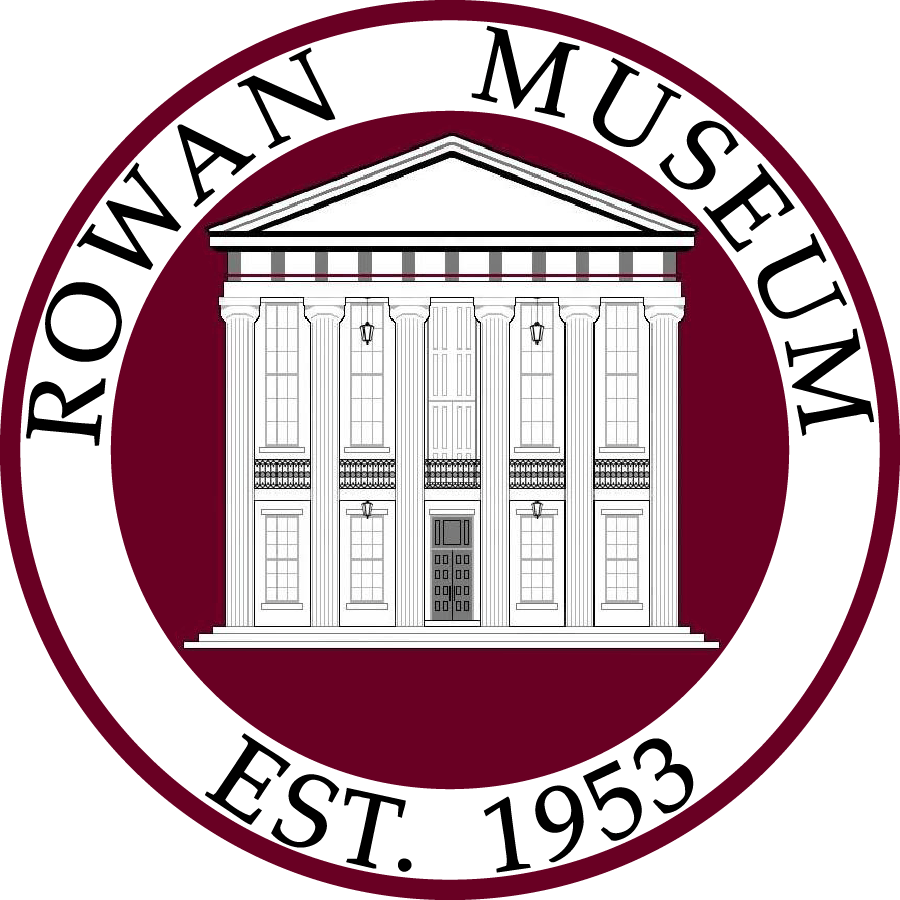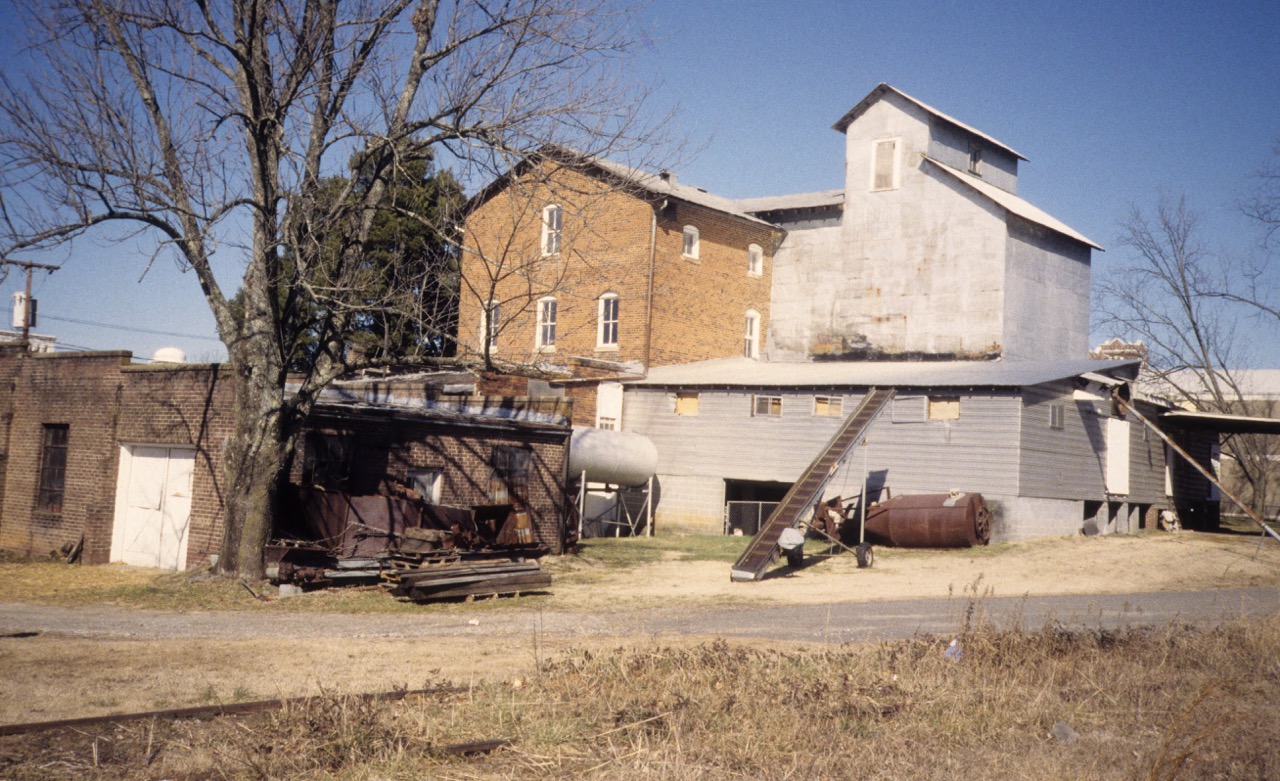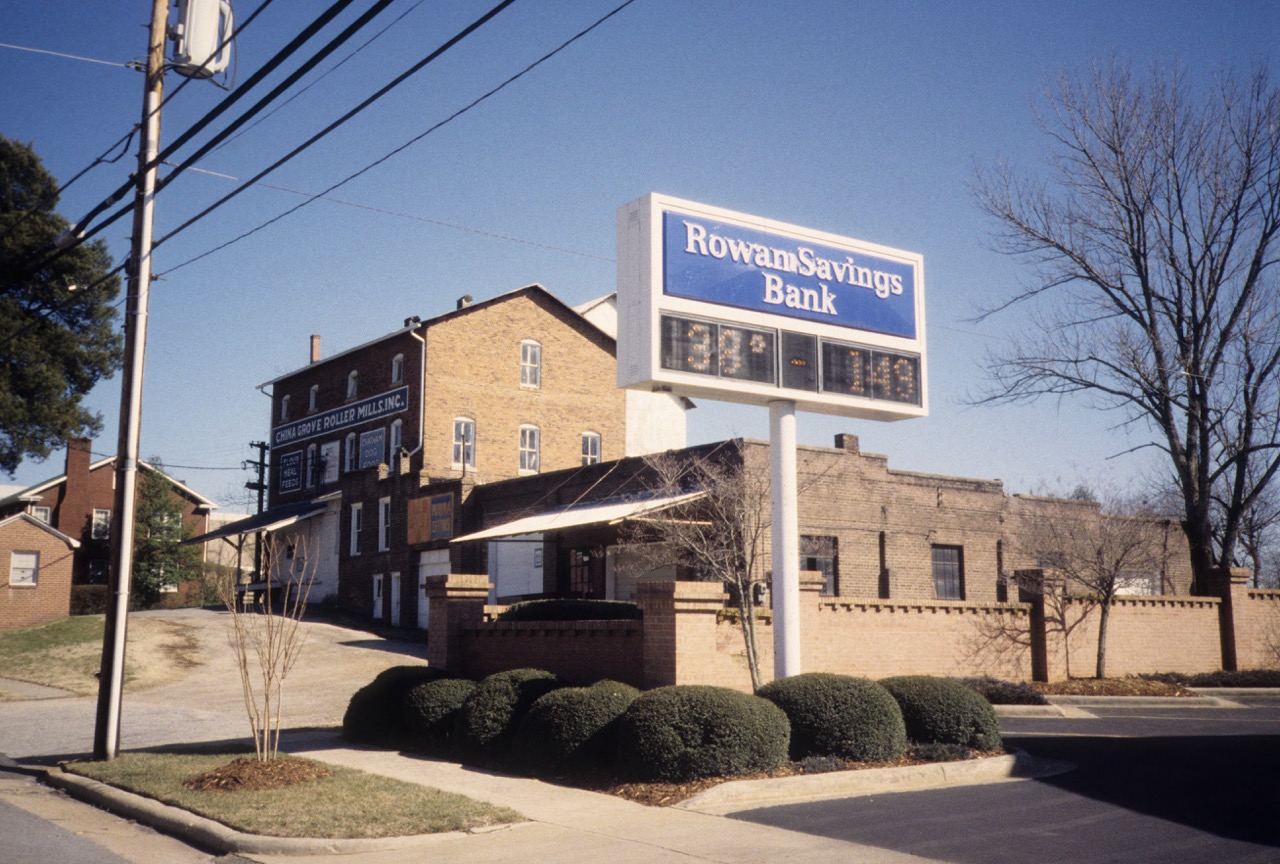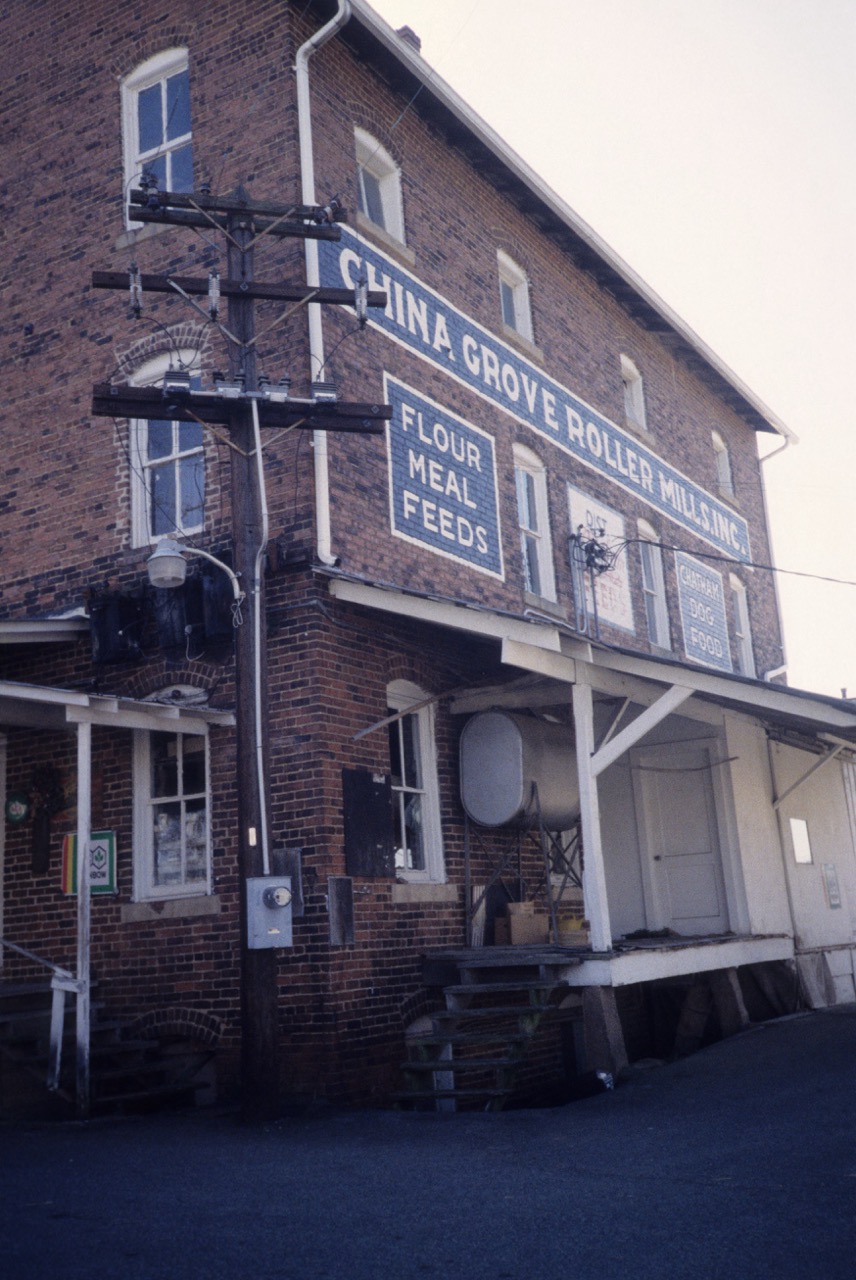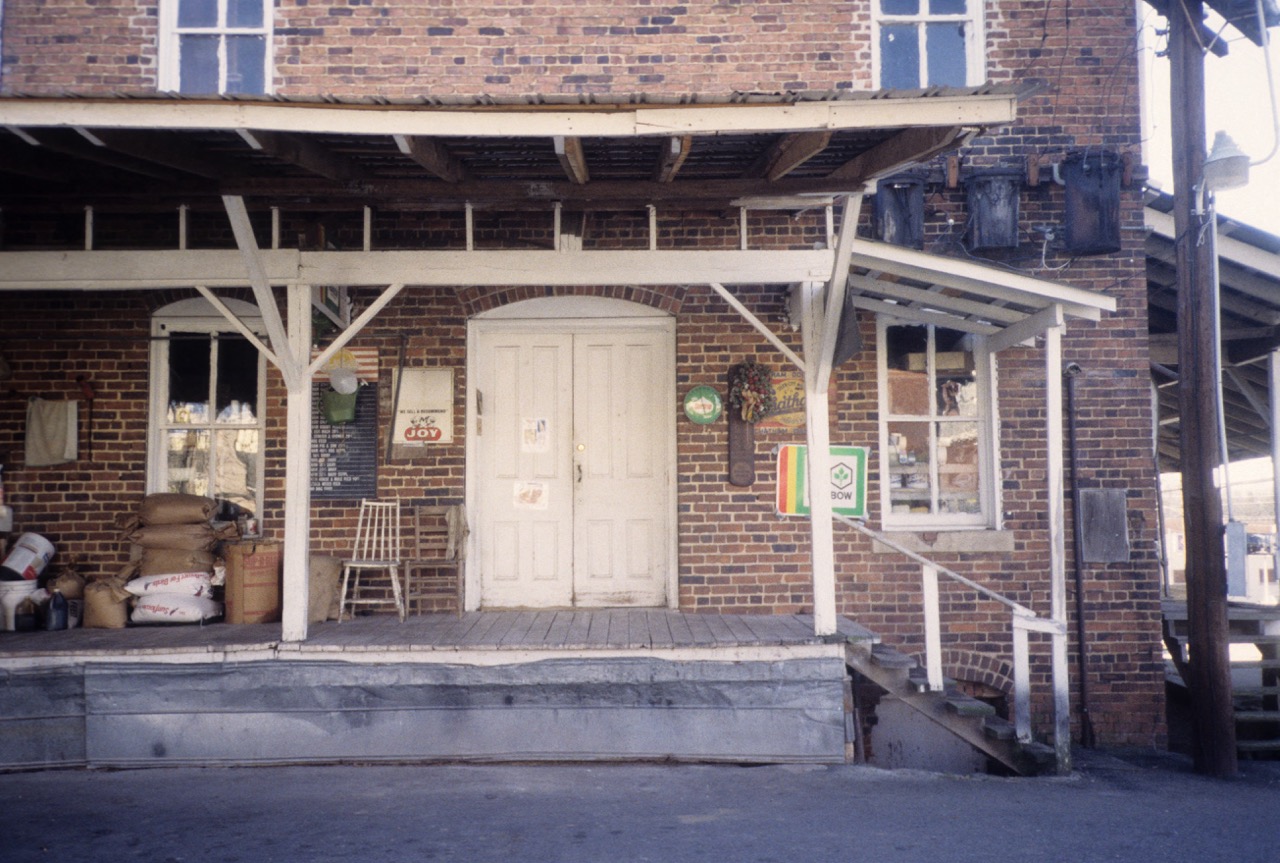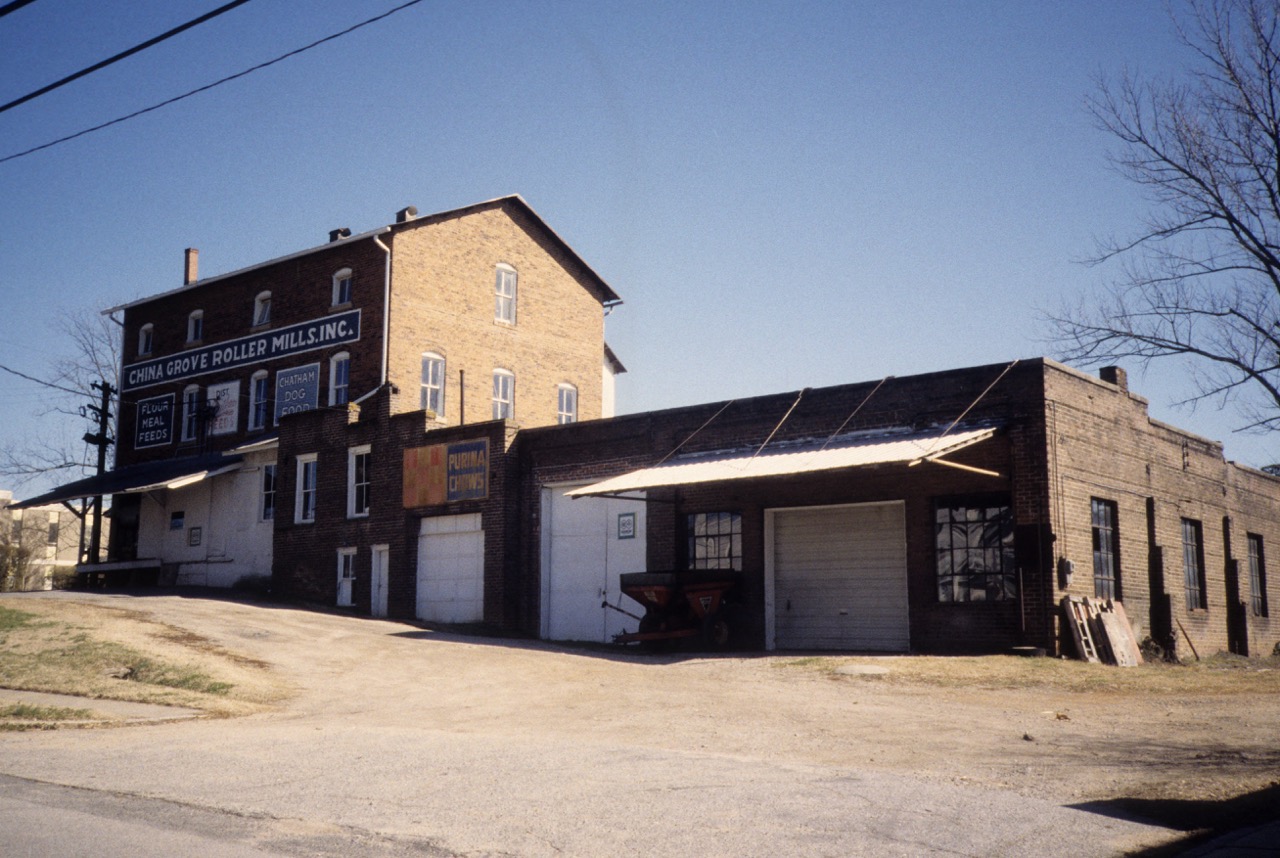Plan your visit
Located in downtown China Grove, NC. From I-85 take Exit 68 (NC Highway 152 China Grove/Rockwell). Turn onto NC Highway 152 East and head towards China Grove on Highway 29 North. Cross over the train tracks on the overpass and turn left at the next intersection (Main Street). Travel south on Main Street about 2 miles and the China Grover Roller Mill is located on the left. Parking lot and street parking available.
Pictured: China Grove Roller Miller as it stands today.
For more than 100 years, the China Grove Roller Mill was in continuous operation and was a meeting place for the agricultural community surrounding the town of China Grove.
Farmers came to sell their grain for flour and corn meal production, to purchase farm necessities, and to socialize. When visitors enter the roller mill, they are transported back to 1903 when the mill first began. Within this three-story building among the National Register of Historic Places, you will get to see first-hand its original milling machinery.
Pictures: Curtesy of NC State University, 1995
Nestled ten miles south of Salisbury, China Grove in North Carolina emerged as a quaint village known for its cotton and chicken markets that served the surrounding agrarian communities. Its name, China Grove, finds its roots from the Chinaberry tree, once a common sight in the area. Amidst the village's simple and tranquil life, the rhythmic hum of machinery from the China Grove Roller Mills, Inc., established at 308 North Main Street, echoed through the years, symbolizing both the heritage and the industrious spirit of the locality.
The story of China Grove Roller Mills, Inc. began to shape in 1895, with a humble frame mill building. In 1903, the frame mill made way for a majestic three-story brick edifice, which not only graced the village with its handsome architecture but also brought in modern milling technology of the times. The mill's facade, adorned with crisp signs, resonated with the hustle and bustle of farmers who frequented the place, transforming it into a focal point of community interactions.
Over the years, the mill witnessed several expansions. Each addition, be it the office built in 1945 or the one-story brick garage additions between circa 1920 and 1940, informed the expansions of the mill adapting to the changing times, yet retaining its core structures. The mill's operations bore witness to the changing agrarian landscape while catering to the community's needs, from milling wheat and corn to retailing animal feeds and gardening essentials.
The operation of the mill was a mixture of tradition intertwined with technology. The grains, after being offloaded, travelled through a labyrinth of wooden chutes, elevating to the third floor for grinding and refining process. The mill's production crafted 420 lbs of flour every 28 minutes.
As times transitioned, so did the products from the mill, adapting to modern nutritional insights. The shift from bleached to enriched flour, the acceptance of wheat bran and germ for human consumption, reflected a broader nutritional awakening.
